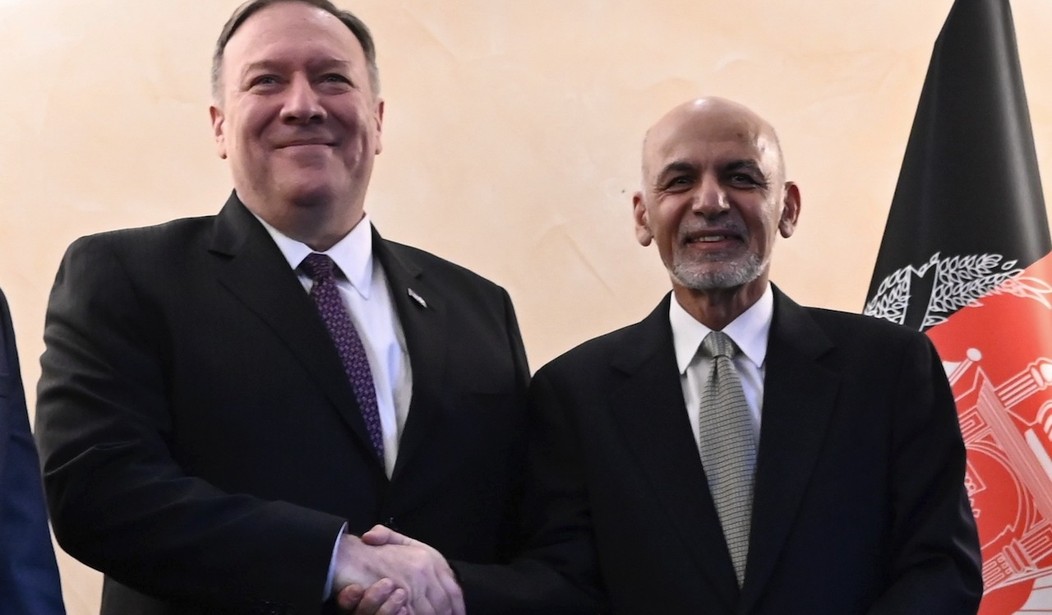By the end of August, the United States and our allies will be effectively out of Afghanistan, leaving President Ashraf Ghani and what’s left of his government in Kabul to fend for themselves. There may still be an American presence at our embassy in the Kabul green zone, assuming the Taliban hasn’t already overrun it by then, but other than that, Afghanistan will be on its own. But assuming they hold on to any territory at all (a major assumption), how will the government pay for its own operations and its military? The United States and NATO will be footing the bill, at least for the next couple of years. The price tag probably isn’t as high as you might imagine. We’ll be sending them four billion dollars per year for the next three years. That’s a rather remarkable figure since that’s less than the annual budget for some medium-sized counties in the United States and it needs to cover the cost of an entire nation’s government plus paying all of the bills of an outgunned military fighting an ongoing war with the Taliban. (Associated Press)
The U.S. and NATO have promised to pay $4 billion a year until 2024 to finance Afghanistan’s military and security forces, which are struggling to contain an advancing Taliban. Already, the U.S. has spent nearly $89 billion over the past 20 years to build, equip and train Afghan forces.
Yet America’s own government watchdog says oversight of the money has been poor, hundreds of millions of dollars have been misspent and corruption is rife in the security apparatus.
Monitoring where the future funding goes will become virtually impossible after Aug. 31, when the last coalition troops leave.
As we’ve discussed here repeatedly, the government we helped establish in Kabul is notoriously corrupt. Even while we were there in full force, tens of millions of dollars simply went “missing” every year, with officials at all levels managing to line their pockets instead of using the money to help their citizens. Little money reaches the rural provinces of the country where farmers are barely aware of the existence of government services.
The military isn’t much better. Troops regularly complain about not being paid and running short of everything from ammunition to food. Where the money actually goes is largely a mystery. And as the linked report points out, once the last of our forces have departed, there will be nobody left to provide oversight. We’ll just be handing cash over to whoever Ghani appoints to receive it and hoping for the best.
The reality is that the government in Kabul has little to no ability to levy taxes on anyone outside of the capital and most of the residents don’t engage in enough legal transactions to afford to pay taxes anyway. The current government is almost completely incapable of sustaining itself beyond the bare minimum levels of keeping the lights on. It’s a stark reminder of the fact that the Kabul government really only exists because we put it in place and kept it afloat.
The Taliban is clearly aware of all of this and they’ll be ready to take advantage of the situation once we’re gone. And where does the Taliban get all of their weapons and resources? That’s an equally interesting question. It turns out that the Taliban is “megarich” and they have a strong, steady flow of cash. A report issued by NATO a couple of years ago reveals that the Taliban generates more than $5 billion per year in revenue. They sell more than half a billion dollars worth of opium every year and control the global market. They also control all of the mining operations in the western half of the nation. On top of that, they collect “taxes” in the rural provinces, which are little more than extortion payments from local officials and farmers. They also reportedly receive illicit payments from adversarial nations including Iran.
Who knew that crime paid so well? In any event, it appears that they’ll have plenty of money for bullets and bombs while we prop up whatever remains of the government in Kabul.







Join the conversation as a VIP Member